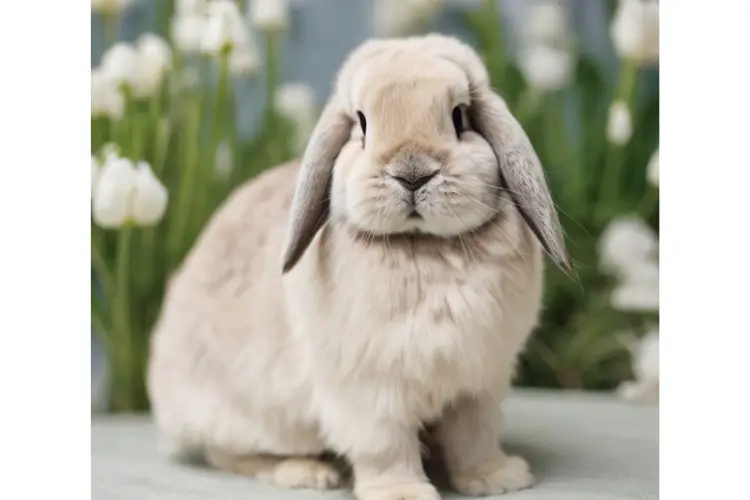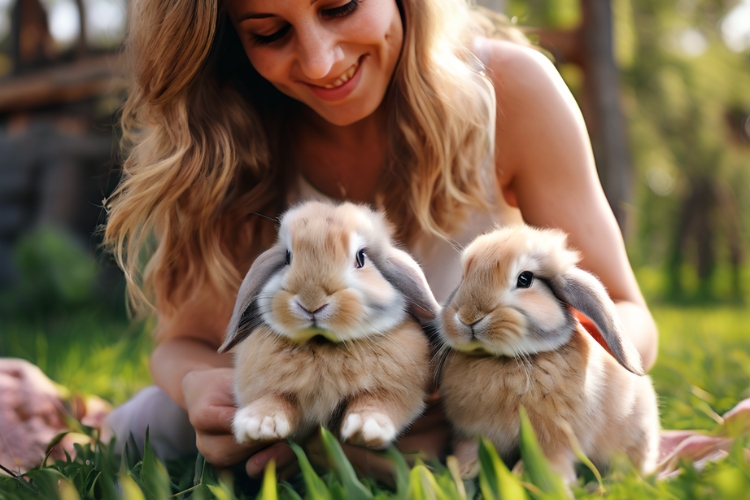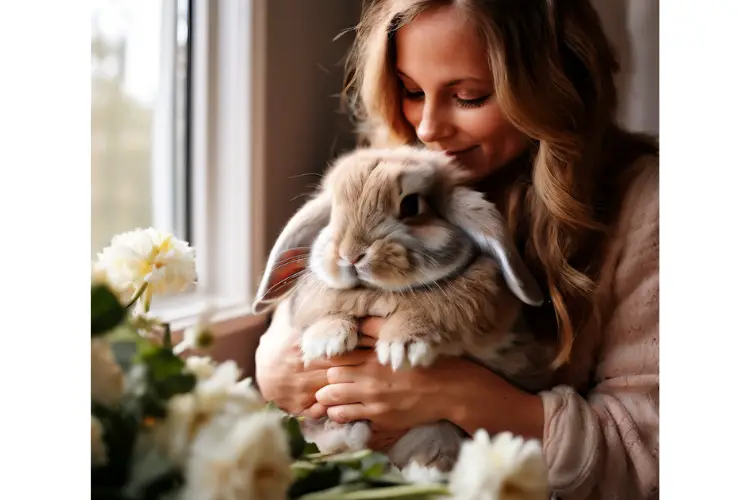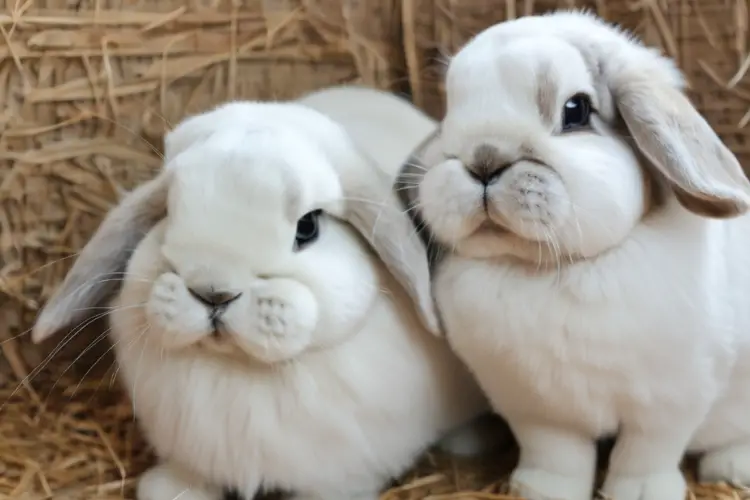Welcoming a litter of adorable Holland Lop bunnies into the world is an exciting experience for any rabbit enthusiast. However, ensuring a successful and healthy pregnancy for your doe requires a deep understanding of the gestation period, as well as proper preparation and care.
In this blog post guide, we’ll delve into the intricacies of the Holland Lop gestation period, covering everything from duration and signs of pregnancy to essential care and potential complications.
What is the Holland Lop Gestation Period?
The gestation period, also known as the pregnancy or prenatal period, is the duration of time between conception and birth. For Holland Lop rabbits, the average gestation period is:
28 to 32 days
While the typical range is 28 to 32 days, it’s not uncommon for some does to give birth a few days earlier or later. However, if your Holland Lop doe has not given birth by day 35, it’s essential to consult with a veterinarian, as this could indicate complications or a false pregnancy.

Signs of Pregnancy in Holland Lop Does
Recognizing the signs of pregnancy in your Holland Lop doe is crucial for providing proper care and preparing for the arrival of the litter. Here are some common indicators that your doe may be pregnant:
- Nesting Behavior: As the due date approaches, your doe may start exhibiting nesting behavior, such as pulling fur from her body or gathering hay and materials to build a nest.
- Increased Appetite: Pregnant does often have an increased appetite, as they require more nutrients to support the developing litter.
- Weight Gain: A noticeable weight gain, especially in the abdominal area, is a common sign of pregnancy in rabbits.
- Behavioral Changes: Some does may become more territorial or aggressive during pregnancy, while others may become more affectionate or docile.
- Visible Movement: In the later stages of pregnancy, you may be able to see or feel the movement of the developing kits (baby rabbits) within the doe’s abdomen.
It’s important to note that not all does exhibit obvious signs of pregnancy, and some may show only subtle changes. Regular monitoring and communication with your veterinarian can help confirm the pregnancy and ensure proper care.

Caring for a Pregnant Holland Lop Doe
Providing the right care and environment for your pregnant Holland Lop doe is essential for ensuring a healthy pregnancy and successful delivery. Here are some important considerations:
Housing and Nesting
- Nesting Box: Provide a nesting box lined with soft, absorbent materials like hay or shredded paper towels. This allows your doe to create a comfortable nest for her litter.
- Quiet and Secure Environment: Ensure a quiet, stress-free environment for your pregnant doe, as stress can lead to complications or cause her to become defensive and aggressive.
- Proper Bedding: Use a thick layer of safe, absorbent bedding, such as aspen shavings or paper-based litters, to maintain a clean and comfortable living space.
Nutrition
- Increased Hay and Pellets: Increase the amount of high-quality hay and pellets in your doe’s diet to provide additional nutrients for the developing litter.
- Fresh Water: Ensure a constant supply of fresh, clean water to support proper hydration.
- Calcium Supplements: Provide a calcium supplement, such as alfalfa hay or calcium-fortified pellets, to help meet the increased calcium demands of pregnancy and lactation.
Exercise and Handling
- Limited Exercise: While some light exercise is beneficial, avoid excessive handling or stressful activities that could harm the developing litter.
- Gentle Handling: When handling is necessary, be gentle and support your doe’s body to prevent stress or injury.
Monitoring and Preparation
- Monitor for Signs of Labor: Watch for signs of impending labor, such as nesting behavior, restlessness, or contractions.
- Have Supplies Ready: Prepare a birthing kit with essential supplies like clean towels, scissors, and a heat source for the newborn kits.
- Consult a Veterinarian: If you have any concerns or notice any abnormalities, consult with a veterinarian experienced in rabbit care.
By providing a safe, stress-free environment and meeting your doe’s nutritional and nesting needs, you can help ensure a healthy pregnancy and successful delivery.

Potential Complications During Pregnancy
Although most Holland Lop pregnancies progress smoothly, it’s important to be aware of potential complications that may arise. Some common issues include:
- Dystocia (Difficult Labor): If your doe is unable to deliver her litter naturally, veterinary intervention may be required to assist with the birth.
- Stillbirths: In some cases, kits may be born stillborn or fail to survive shortly after birth.
- Postpartum Complications: Issues like retained placentas, postpartum hemorrhage, or infections can occur after delivery and require prompt veterinary attention.
- False Pregnancy: Occasionally, a doe may exhibit signs of pregnancy without actually being pregnant, a condition known as a false pregnancy or pseudopregnancy.
By monitoring your doe closely and seeking veterinary guidance at the first sign of any complications, you can increase the chances of a successful and healthy delivery.

Preparing for the Arrival of Holland Lop Kits
As the due date approaches, it’s essential to prepare for the arrival of your Holland Lop kits. Here are some tips to help you get ready:
- Set Up a Nesting Box: Provide a nesting box lined with soft, absorbent materials like hay or shredded paper towels, allowing your doe to create a comfortable nest for her litter.
- Gather Supplies: Have a birthing kit ready with essential items like clean towels, scissors, and a heat source (e.g., a heating pad or hot water bottle) to help keep the newborn kits warm.
- Create a Quiet Space: Designate a quiet, stress-free area for your doe to give birth and care for her litter.
- Learn Proper Handling: Educate yourself on proper handling techniques for newborn kits to ensure their safety and minimize stress.
- Plan for Supplemental Feeding: Have a plan in place for supplemental feeding if your doe is unable to provide sufficient milk for her litter.
By being prepared and taking the necessary precautions, you can ensure a smooth transition and provide the best care for your Holland Lop doe and her newborn kits.
FAQs:
Q: How can I determine the exact due date for my Holland Lop doe?
A: While the gestation period for Holland Lops typically ranges from 28 to 32 days, the exact due date can be difficult to pinpoint without witnessing the breeding. It’s best to monitor your doe closely for signs of pregnancy and impending labor, and consult with a veterinarian if you have concerns.
Q: Is it safe to handle a pregnant Holland Lop doe?
A: While some light handling is generally safe, it’s best to minimize handling and avoid stressful situations during pregnancy. When handling is necessary, be gentle and support your doe’s body to prevent stress or injury.
Q: Can a Holland Lop doe have a false pregnancy?
A: Yes, false pregnancies (pseudopregnancies) can occur in Holland Lop does. In these cases, the doe may exhibit signs of pregnancy, such as nesting behavior and weight gain, without actually being pregnant. Consult with a veterinarian if you suspect a false pregnancy.
Q: How many kits can a Holland Lop doe typically have in a litter?
A: The litter size for Holland Lop rabbits can vary, but on average, they have 4 to 6 kits per litter. However, some does may have smaller or larger litters depending on various factors.
Q: What should I do if my Holland Lop doe is experiencing complications during labor?
A: If your doe is experiencing prolonged or difficult labor, or if you notice any concerning signs, such as excessive bleeding or lethargy, it’s crucial to seek immediate veterinary assistance. Prompt intervention can be lifesaving for both the doe and her litter.
Table: Holland Lop Gestation Period and Litter Size
| Breed | Gestation Period | Average Litter Size |
|---|---|---|
| Holland Lop | 28-32 days | 4-6 kits |
Conclusion
Understanding the Holland Lop gestation period and providing proper care during pregnancy is crucial for ensuring a successful and healthy delivery. By following the guidelines outlined in this comprehensive guide, you can prepare for the arrival of your adorable litter of Holland Lop kits and ensure the best possible outcome for both the mother and her babies.
Remember to monitor your doe closely for signs of pregnancy and impending labor, provide a suitable nesting environment, and adjust her diet to meet the increased nutritional demands of pregnancy. Additionally, familiarize yourself with potential complications and be prepared to seek veterinary assistance if necessary.
Welcoming a new litter of Holland Lop bunnies is a rewarding and exciting experience. With patience, proper preparation, and attention to your doe’s needs, you can help ensure a smooth and successful pregnancy and delivery, and enjoy the joy of watching your furry bundles of joy thrive and grow.

